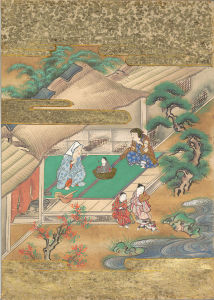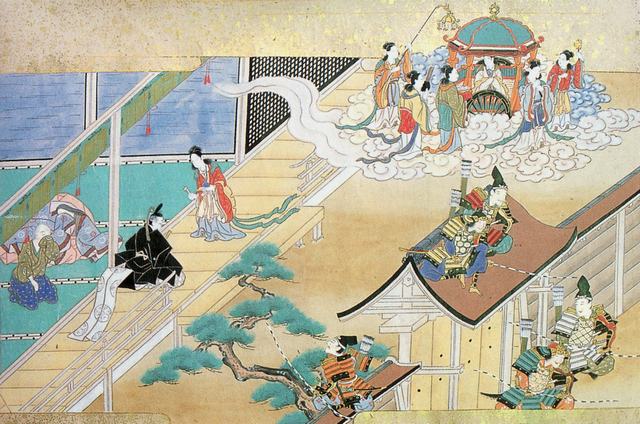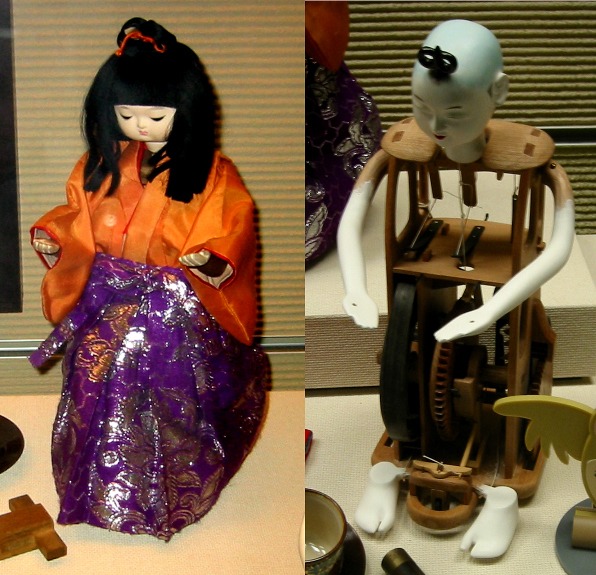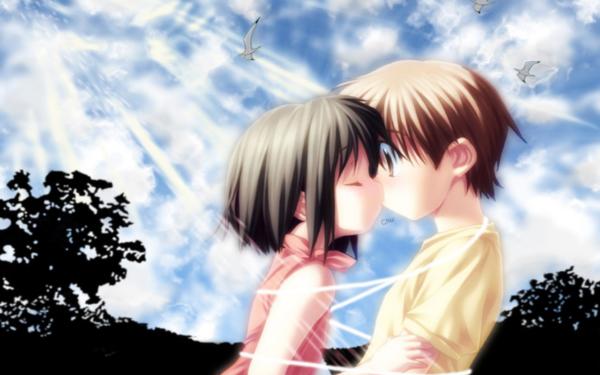
Modern Japan is well known for its fascination with all things robotic. This is rooted deep in their history, when they used clockwork puppets called the Karakuri Ninyao to play out folk stories during religious festivals. Like their preoccupation with robots, the Japanese are well known for their contributions to science fiction. Famous science fiction from Japan ranges from kaiju monster flicks of the 1950s like Godzilla to iconic anime like Akira, Neon Genesis Evangelion, and Cowboy Bebop.
Not surprisingly, the roots of this genre run deep in Japan. The oldest surviving folkloric narrative in Japan, dating from around the 10th century, is widely considered among the oldest science fiction style story in the world. The story is called “The Bamboo-Cutter and the Moon-Child.”
An old, old story, in brief
Long ago, an old bamboo cutter and his wife eked out a lonely existence. One day, the bamboo cutter was surprised to see a bamboo stalk glowing with light. When he cut it open, he found a tiny girl nestled inside. He took her home and he and his wife raised the radiant child as their own. When the bamboo cutter returned to work, he found that the stalk the child had occupied would contain gold when he cut it open again. Soon he and his wife were rich and able to buy a big house.
During that time, the child grew to become a beautiful young woman. She gave off a faint glow, and to look on her filled her old parents with joy. They named her Princess Moonlight because of her glow. Soon though word of her beauty spread far and wide, and men from all over clamored to lay their eyes on her. Five noblemen in particular were enamored with her, staying outside her house for days on end just to catch a glimpse of her. Finally, her aged father persuades the girl to at least give them a chance. She tells the would-be husbands that she would marry whoever carries out a task she gives them. Each was given an impossible task. The first was asked to bring her the stone bowl of the Buddha back from India. The second was to give her the branch of a miraculous tree growing on Mount Horai, that was said to sprout jewels instead of fruit. The third was asked to bring her the skin of a fire-rat, from China. The fourth was told to bring her a colorful jewel that a dragon carried on its head, while the fifth was tasked with finding the swallow which carried a shell in its stomach and bring the shell back to her.
Long story short, each noble failed in his task. Some tried to deceive Princess Moonlight, while others gave up when the task proved impossible. One noble was severely injured, or killed in some versions.
The Emperor heard of Princess Moonlight’s beauty, and sent Court ladies to see if she was really as beautiful as rumor had it. When they returned and said that it was indeed true, he summoned Princess Moonlight to the palace. She refused. Intrigued, he visited her home and quickly became smitten with her.
However, Princess Moonlight was not interested in any terrestrial suitor. She was gradually becoming more withdrawn, and would spend a lot of time at night staring at the moon. One night she revealed to her step-father that she had originally came from the moon, sent to escape a devastating war (or, in some versions, as a punishment). She said that she would one day return, and she did not want to be tied down in a marriage. Her parents grieved that she would one day leave them.
The Emperor, who heard the news, was not happy at all. When the Emperor had confirmed it, he sent troops to secure the house. One thousand were stationed on the roof, while another thousand watched the perimeter. Princess Moonlight’s parents hid her in an inner room.

Princess Moonlight tried to dissuade the would be protectors, saying that no preparations of the Earth dwellers could stop the moon-people. But they continued to keep her under guard. The night wore on and the moon rose high. Dawn approached and the earthlings believed that they would make it through the night without incident. Then a cloud began to form on the moon. It rolled toward them, until it loomed over the house. Radiant figures stood in a giant cloud wreathed chariot. The moon people explain that they sent the girl to earth, and the gold was also sent as a stipend for her care. The moon people wouldn’t be talked out of their purpose. They offered Princess Moonlight the Elixir of Life and a potion which would wipe her experiences on earth from her memory forever.
She took the Elixir of Life but refused the potion. She wrote a letter to the Emperor and gave him a phial of the Elixir of Life. She leaves the letter and drinks the potion before being taken back home to the moon.
The letter was taken to the palace. The Emperor refused to read it or take the Elixir. He had the letter taken to Mount Fuji to be burnt as an offering to Princess Moonlight, which is why smoke can be seen to this day rising out of Mt. Fuji.
Traditional folktale with scifi elements
While science fiction was not a genre at the time this folktale was written, the story definitely has some science fiction elements. Specifically, the idea of aliens (the moon people) coming to earth on a fantastic vehicle. It seems like a bizarre addition to what would otherwise be a fairly typical folktale for the region. A similar story, the story of Momotaro, involves a small girl emerging from a peach, similar to how Princess Moonlight was found in a bamboo stalk. That sort of story is fairly common to East Asia, but the proto-scifi elements are unique. It goes to show that the Japanese propensity for unique story telling is rooted deep in its cultural history.
Sources:
“The Bamboo-Cutter and the Moon-Child: Japanese Folktale.” WorldofTales.com. 2014. World of Tales. November 1, 2014. http://www.worldoftales.com/Asian_folktales/Japanese_folktale_15.html
“Once Upon a Time in Japan.” NHK World. http://www3.nhk.or.jp/nhkworld/folktale/special/english/kaguya/overview.html



